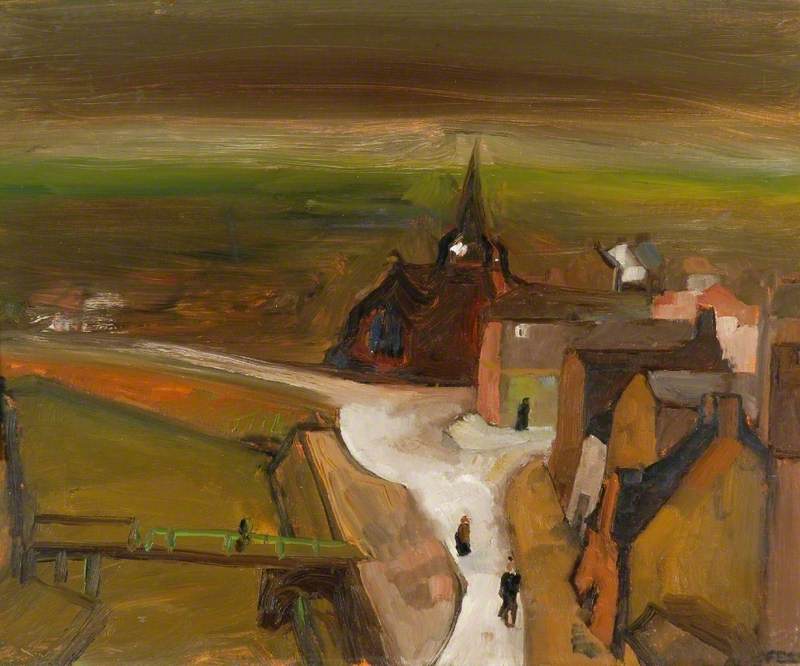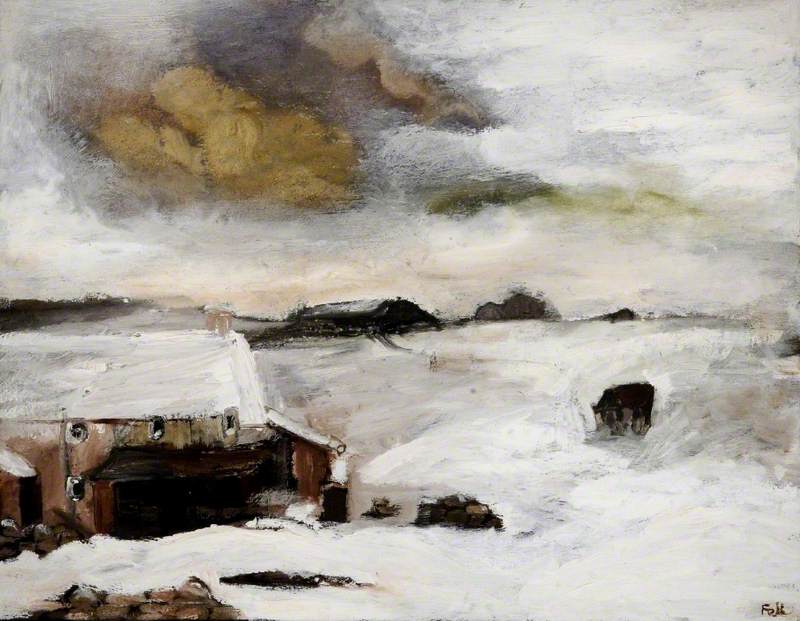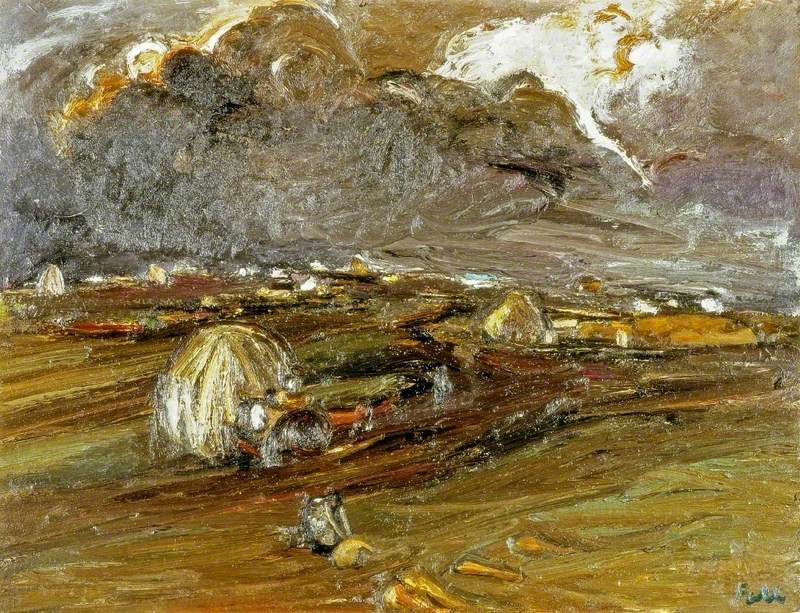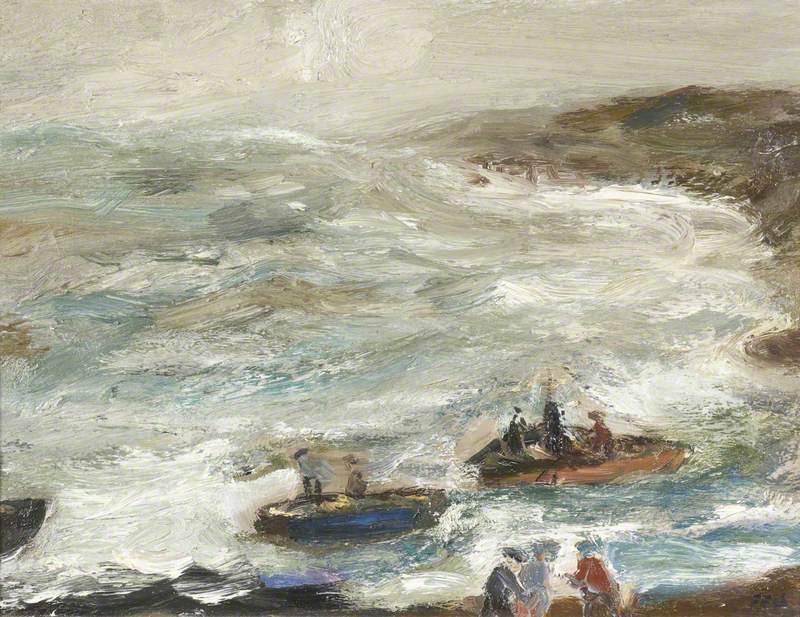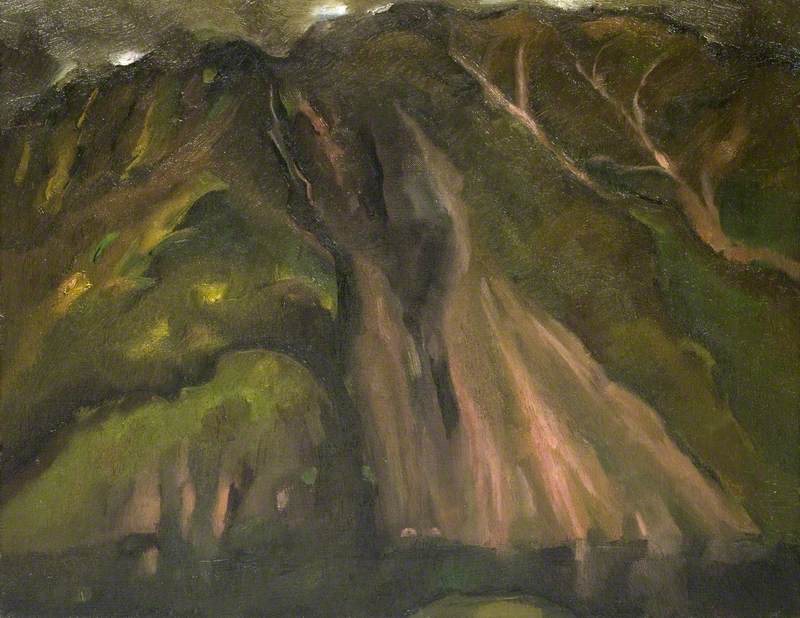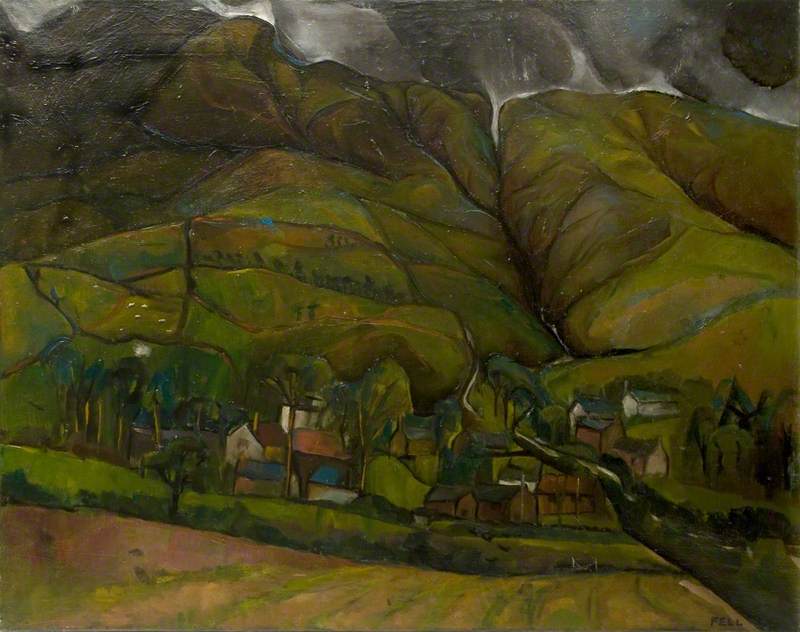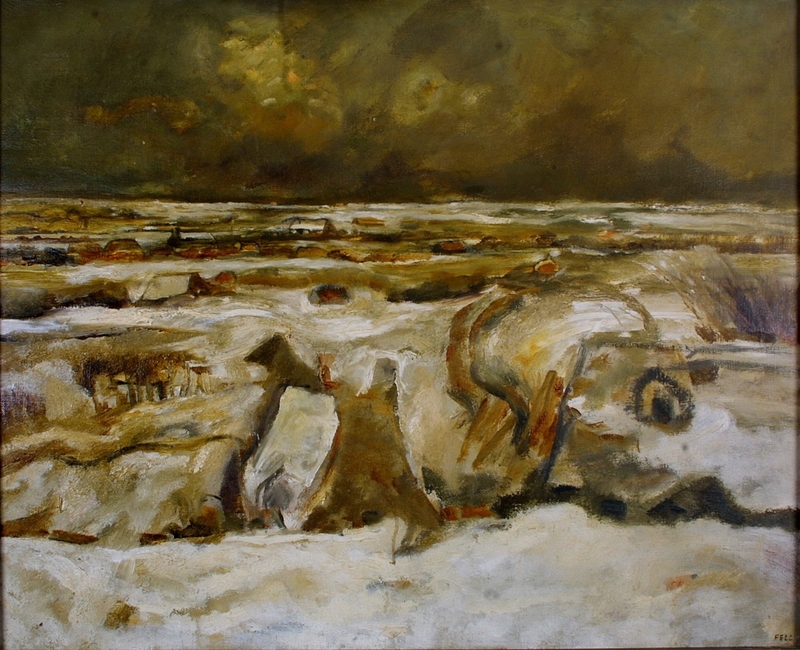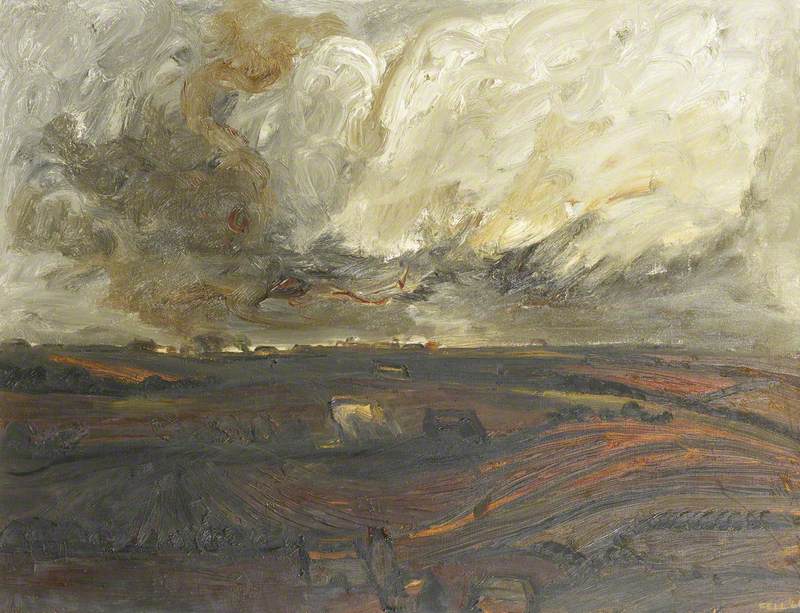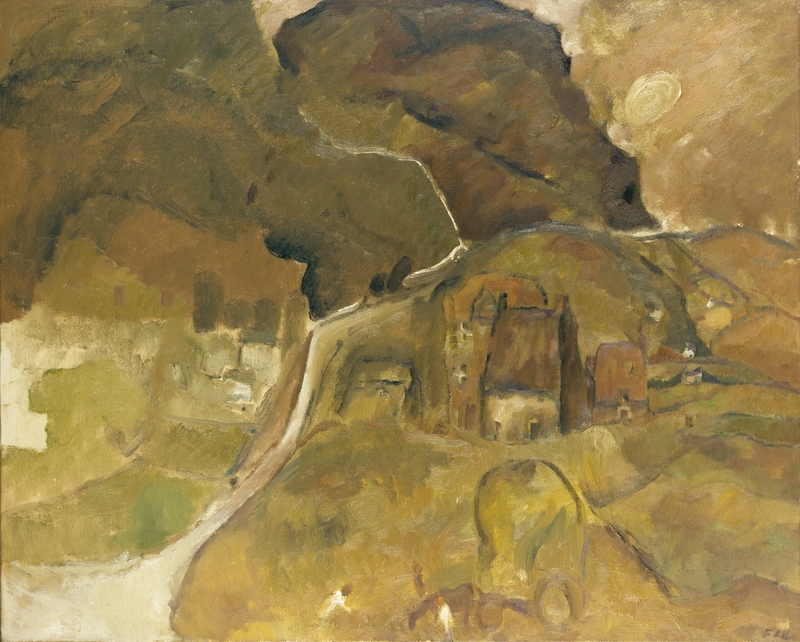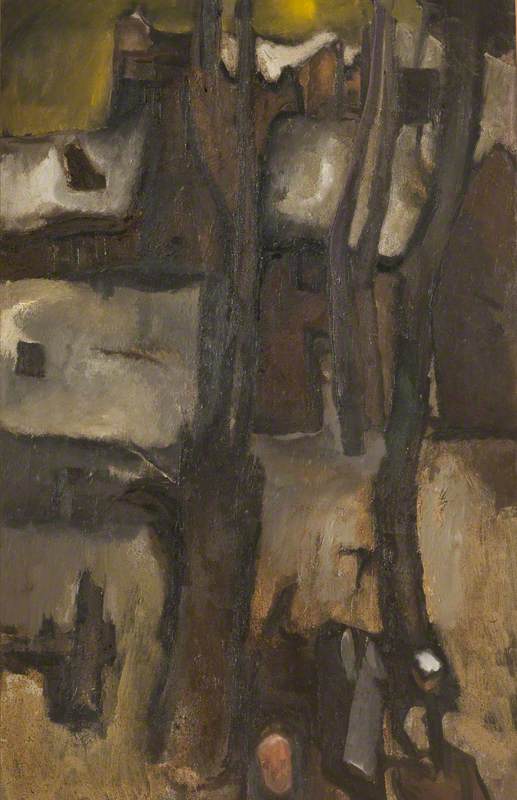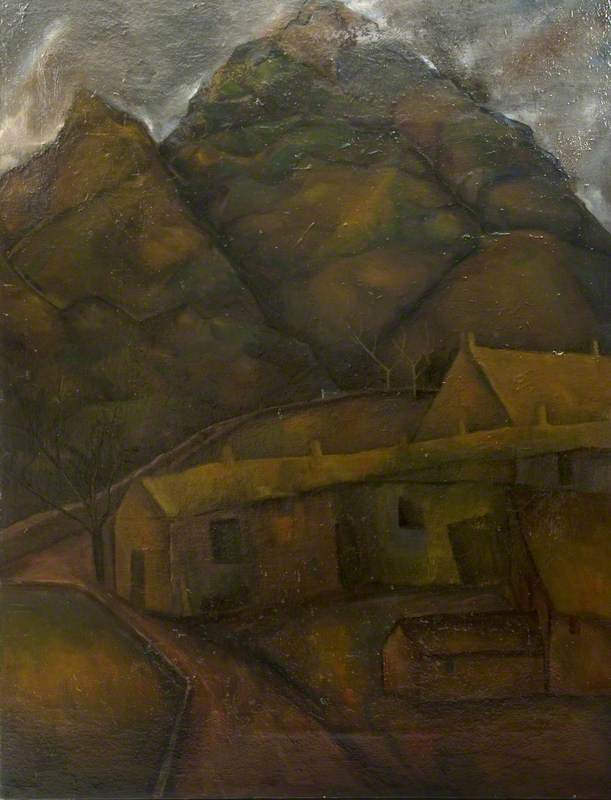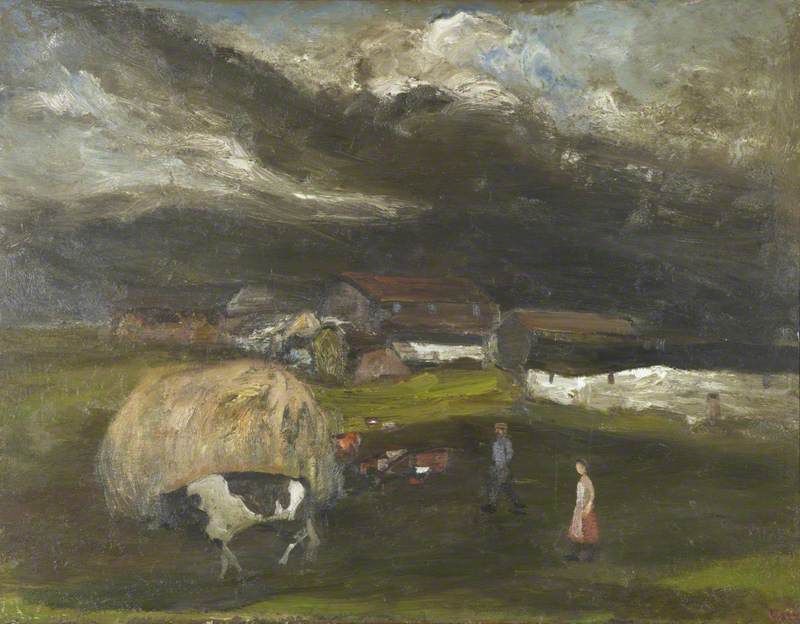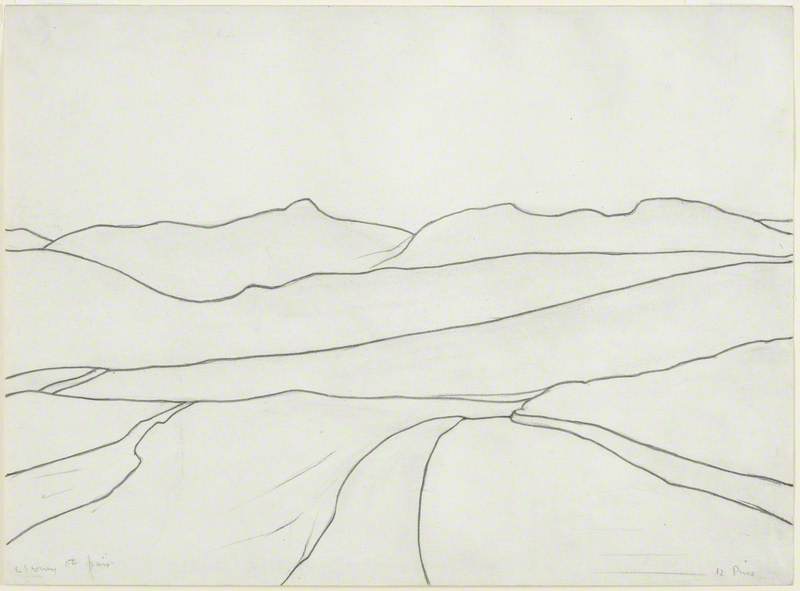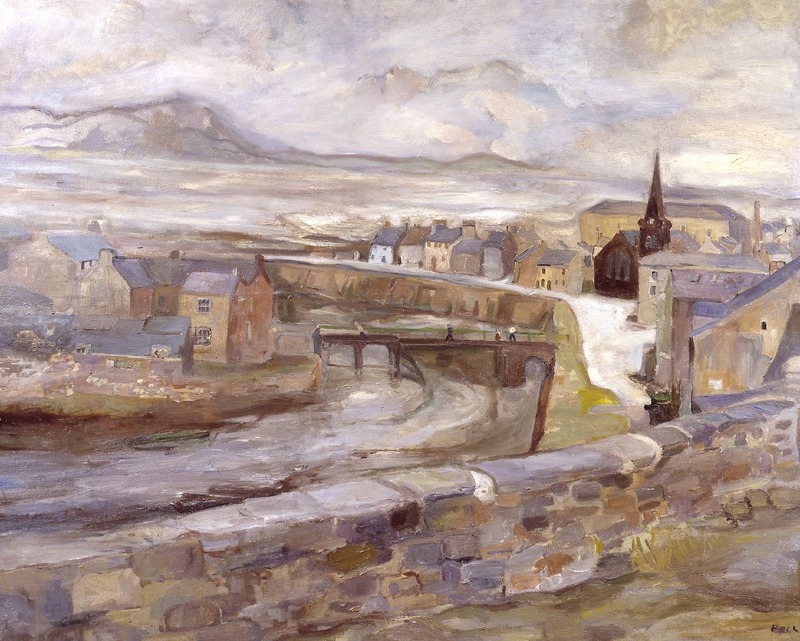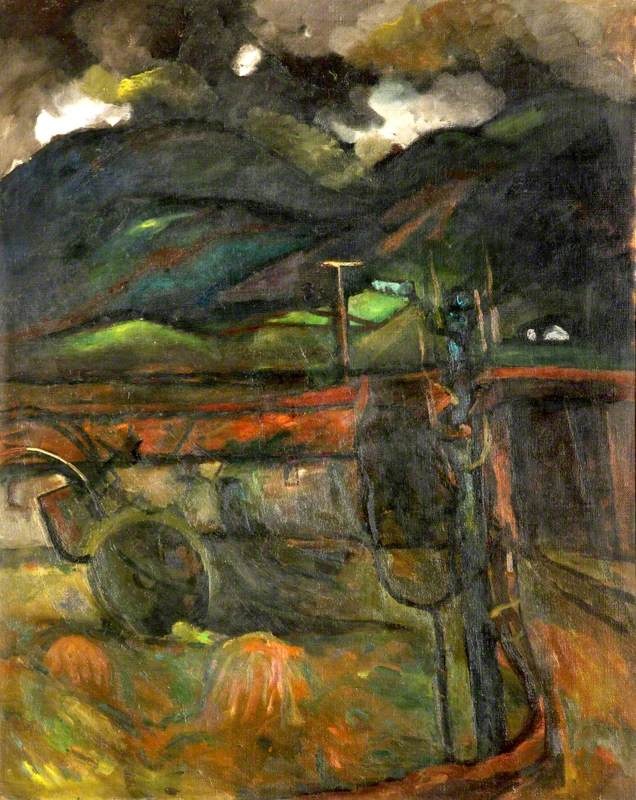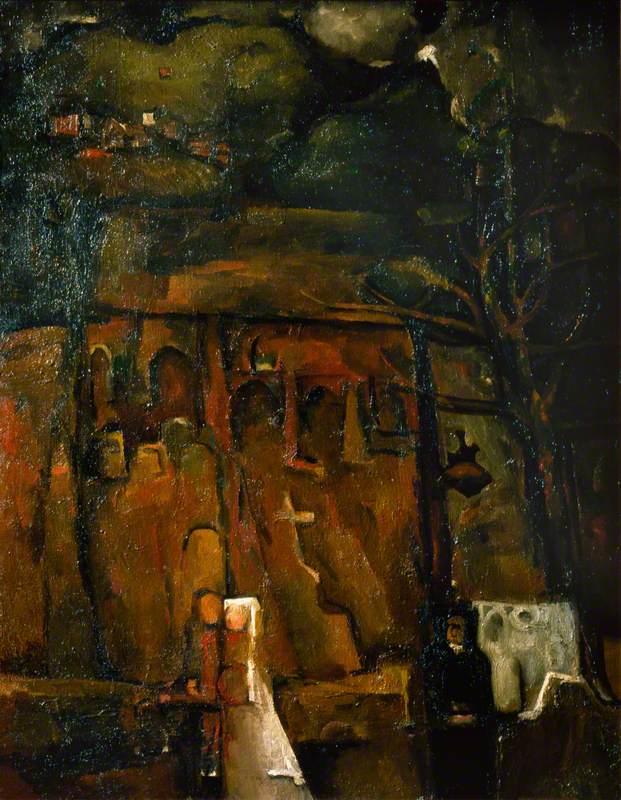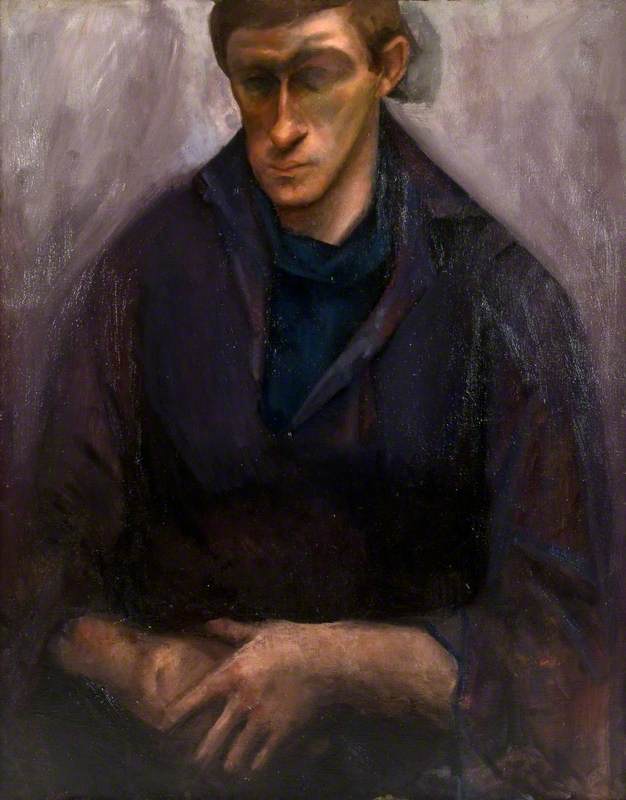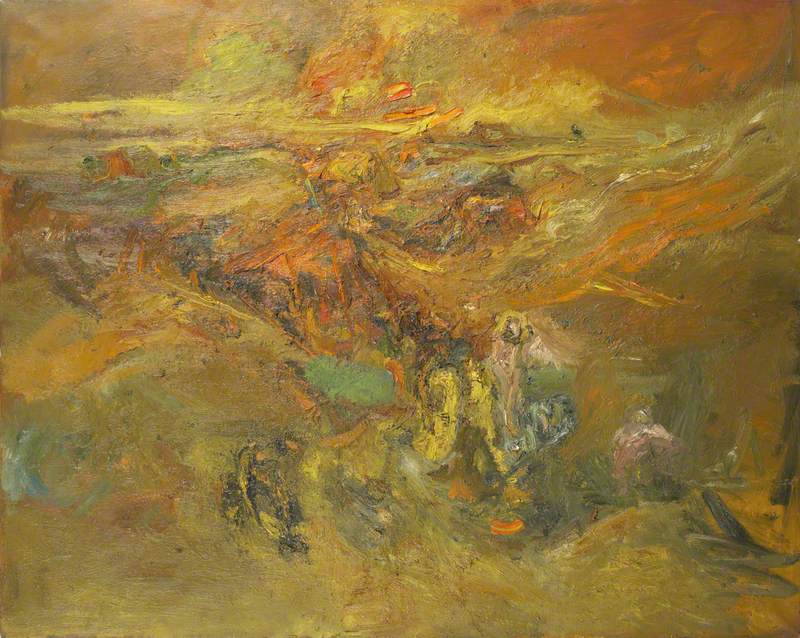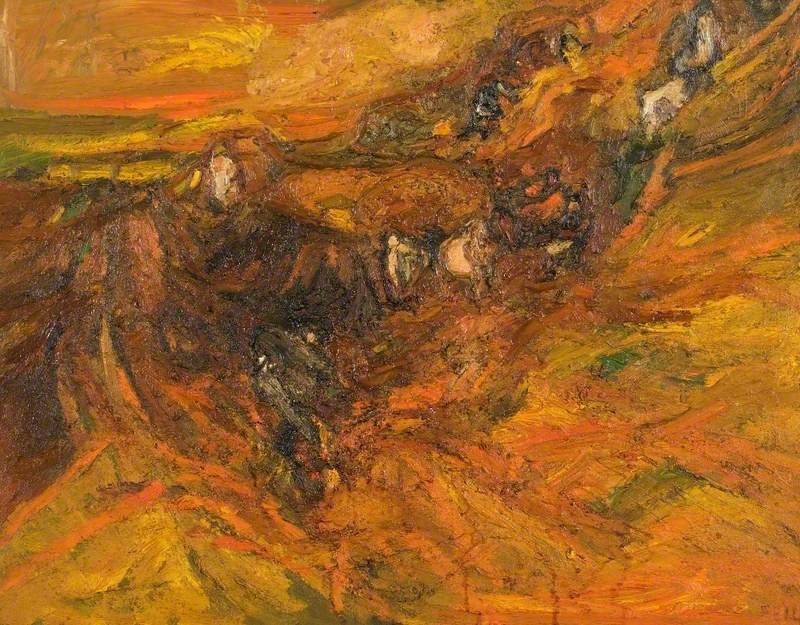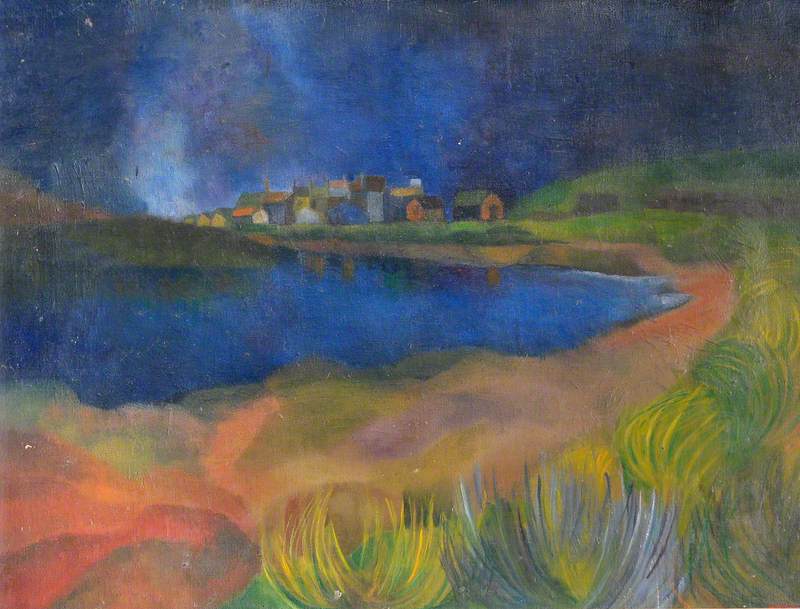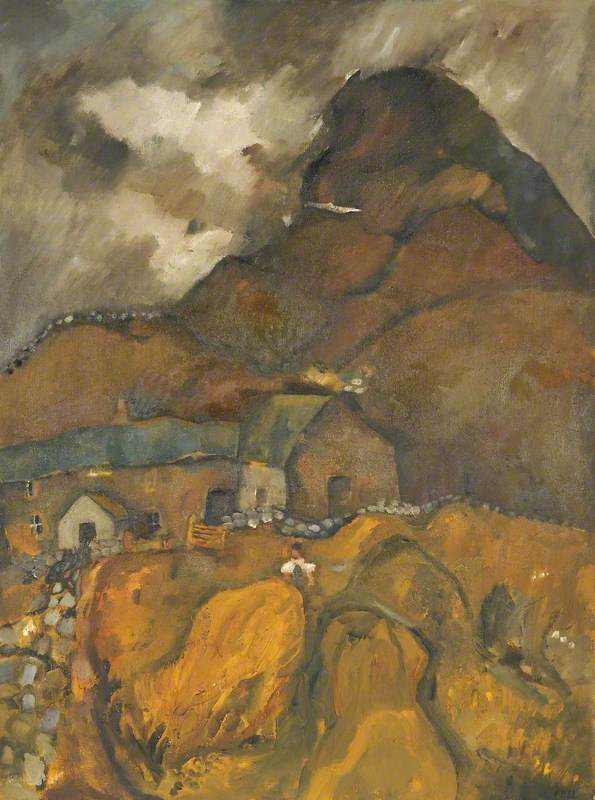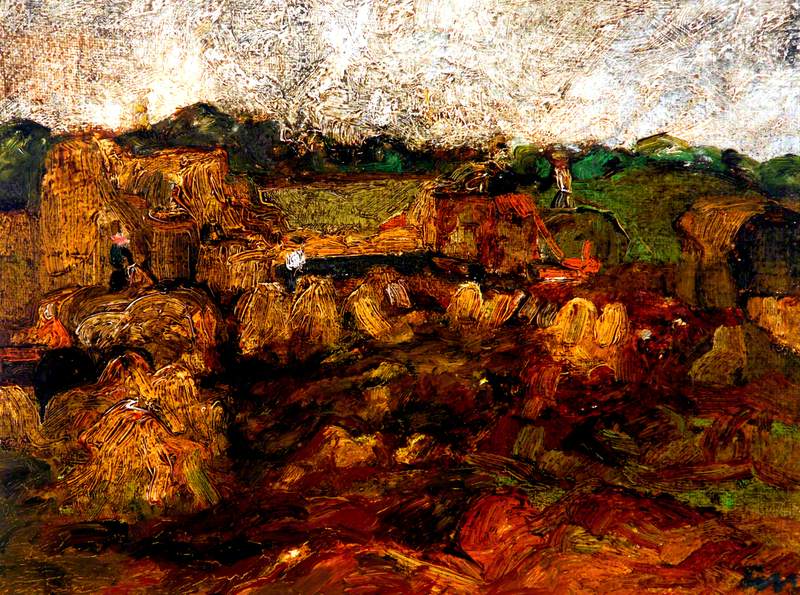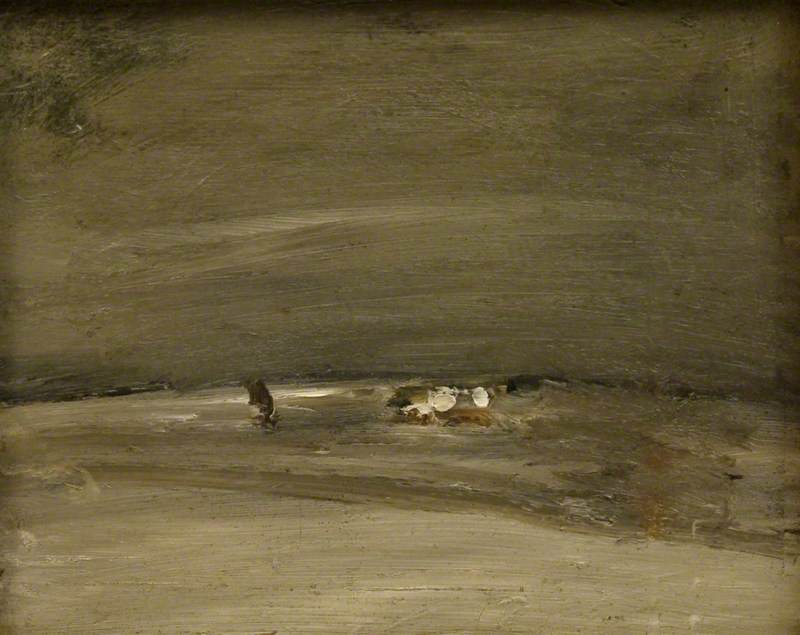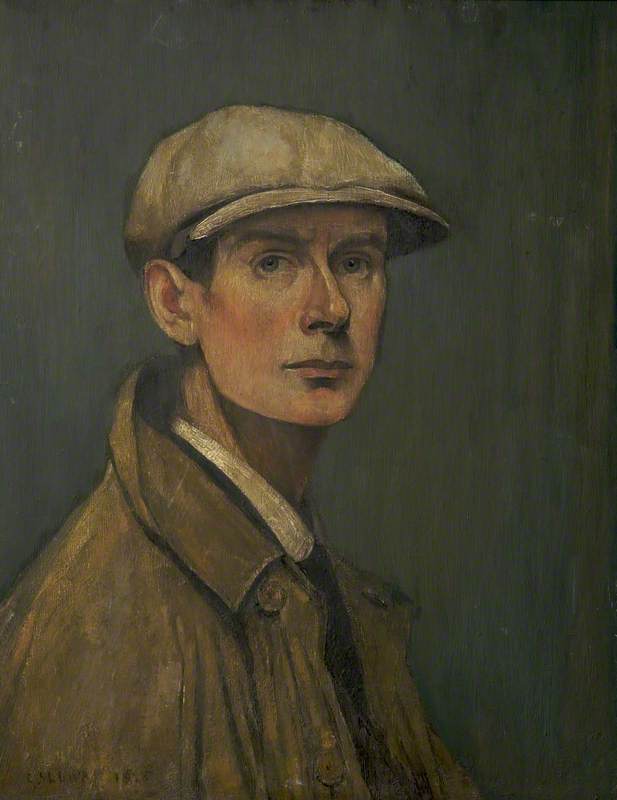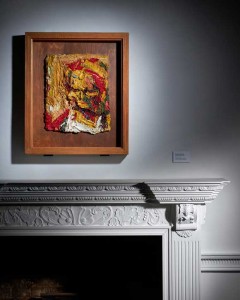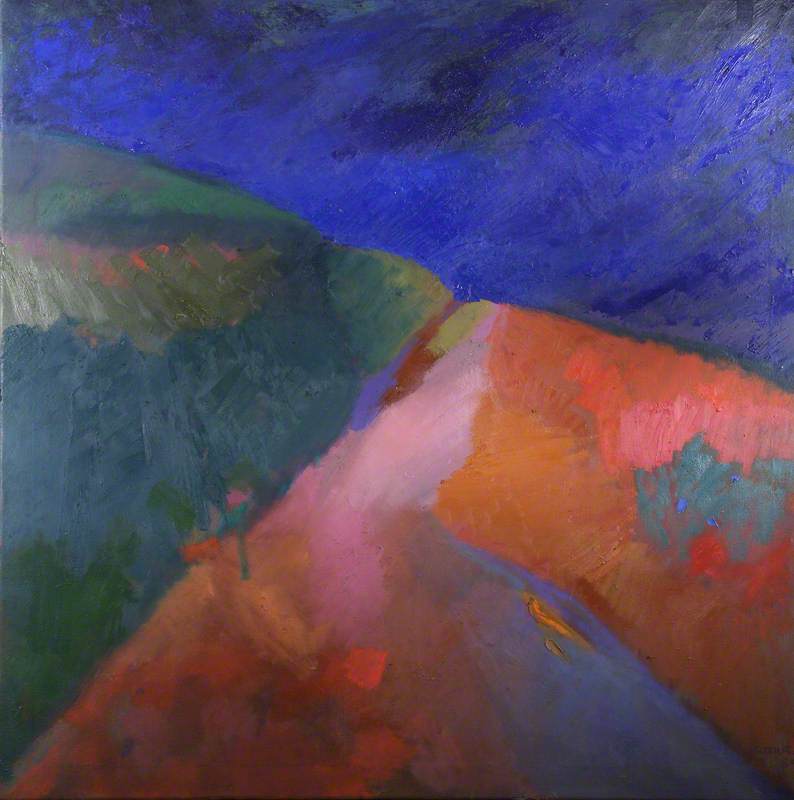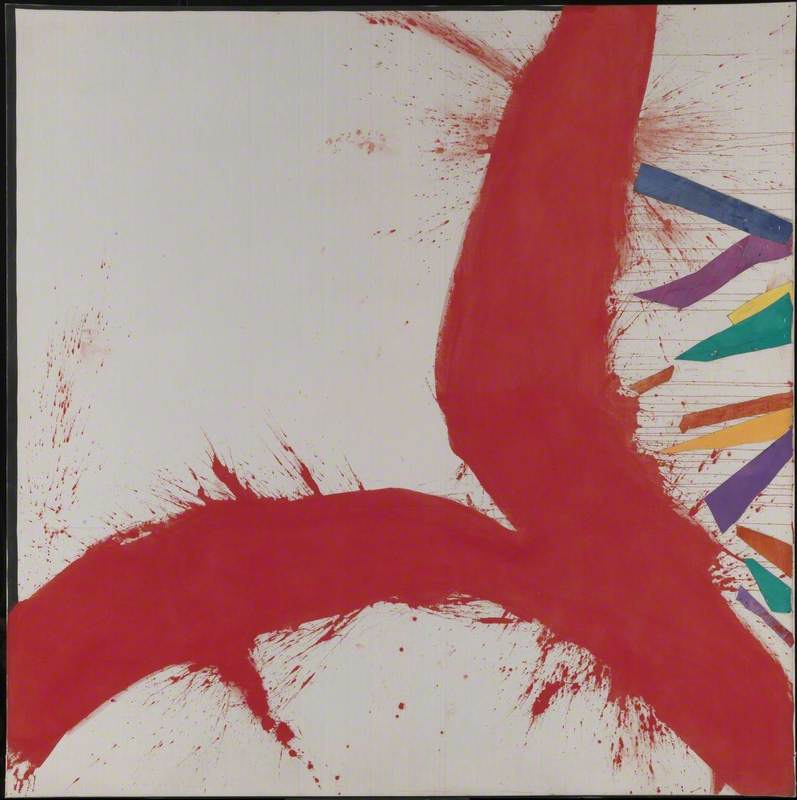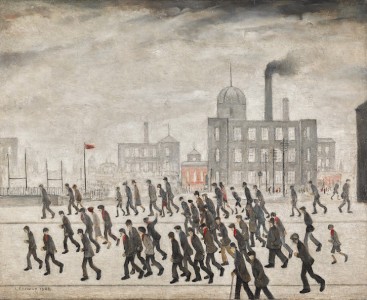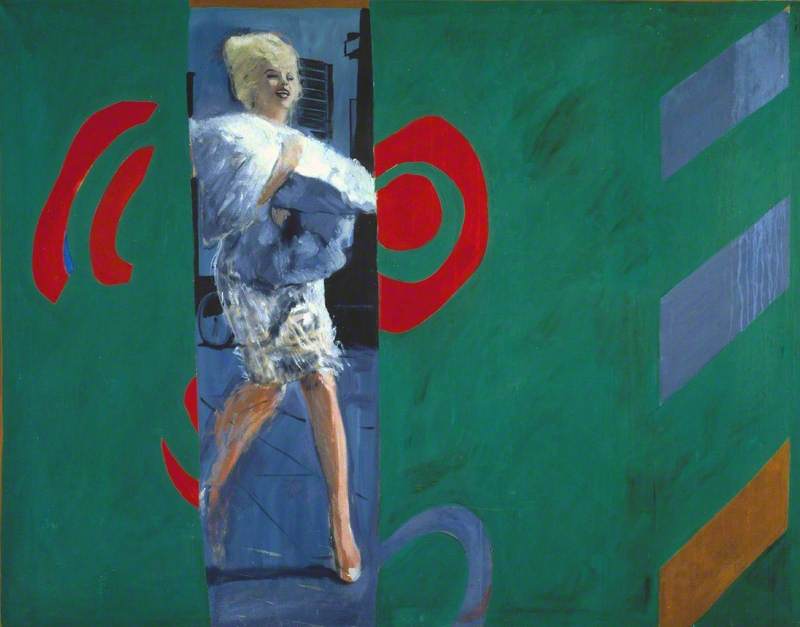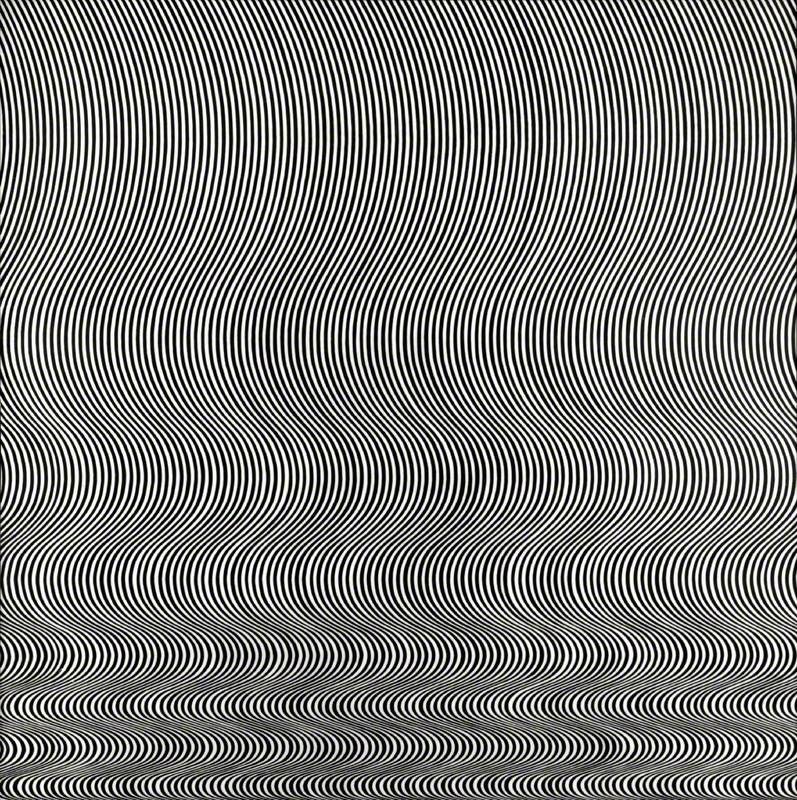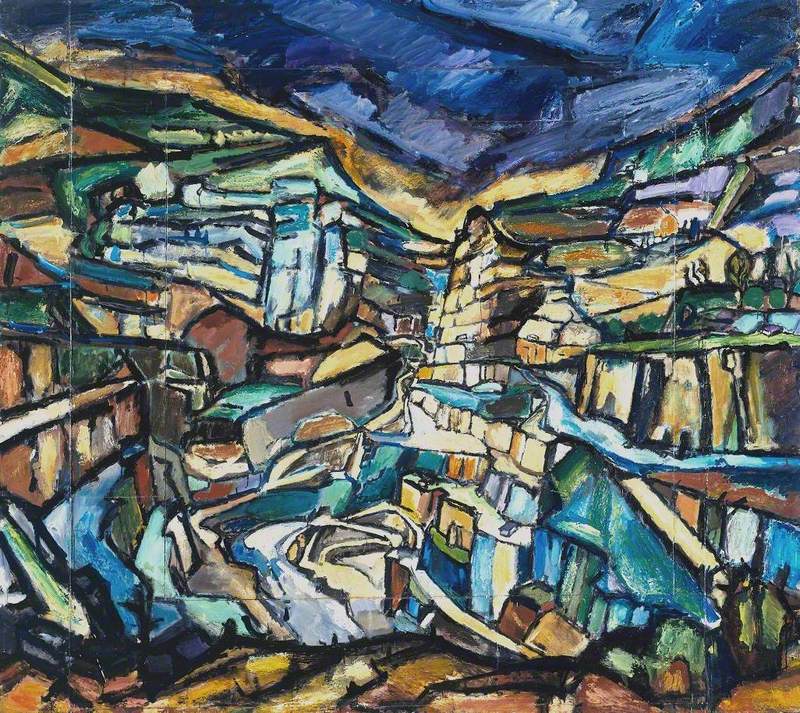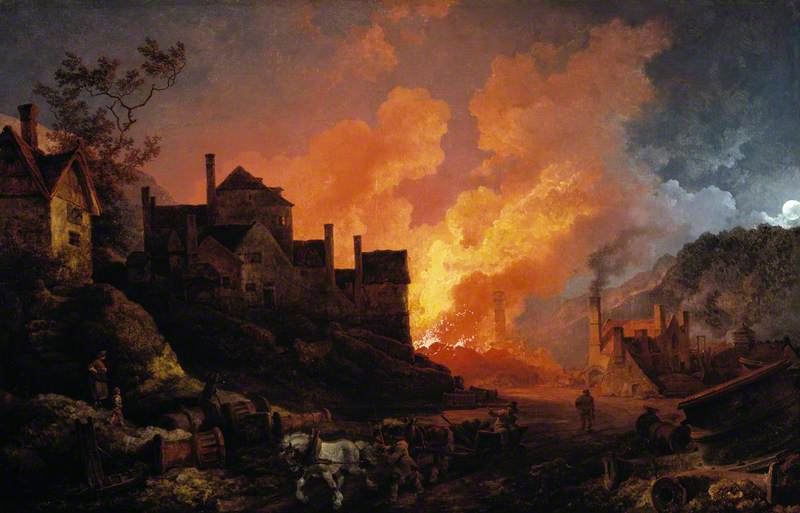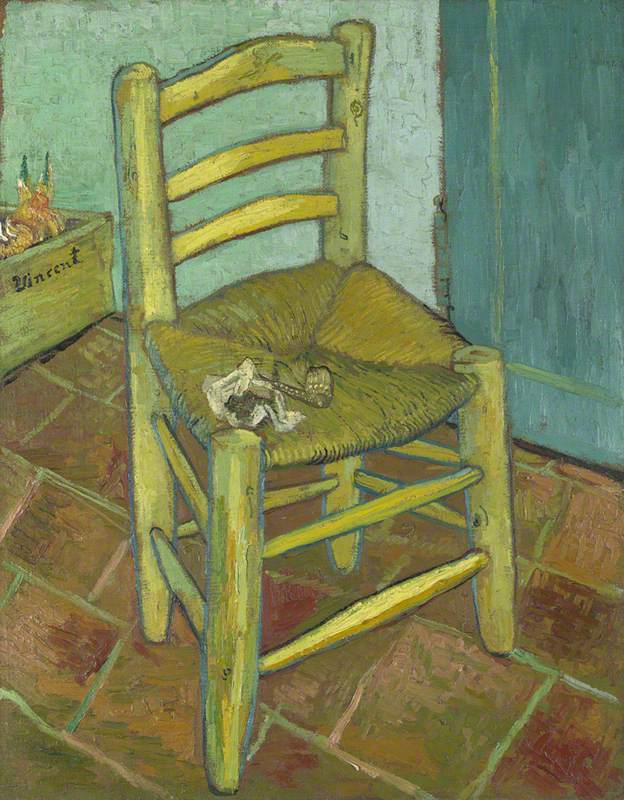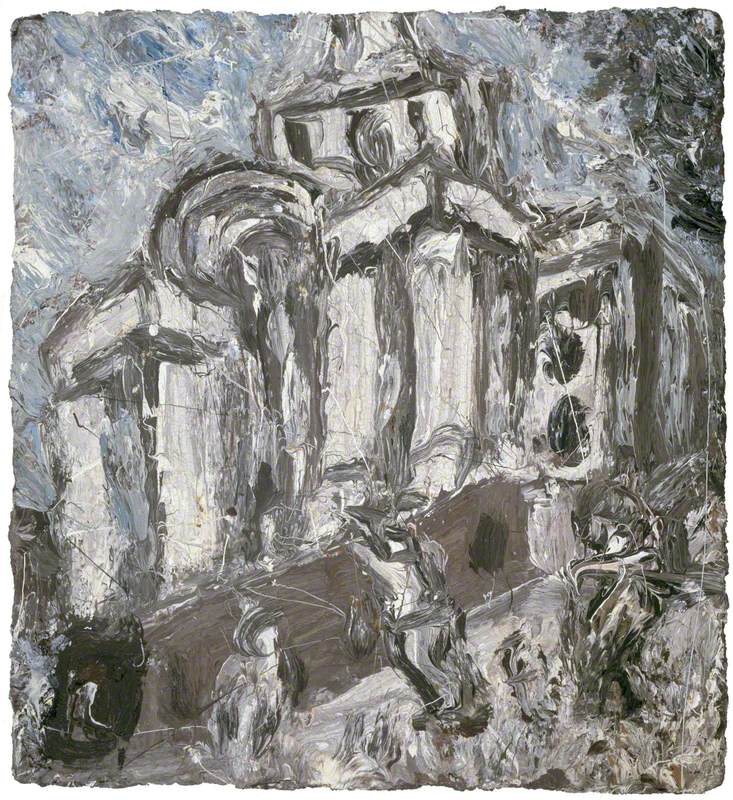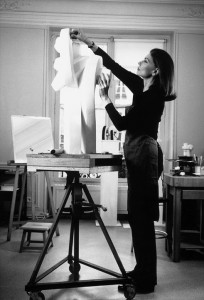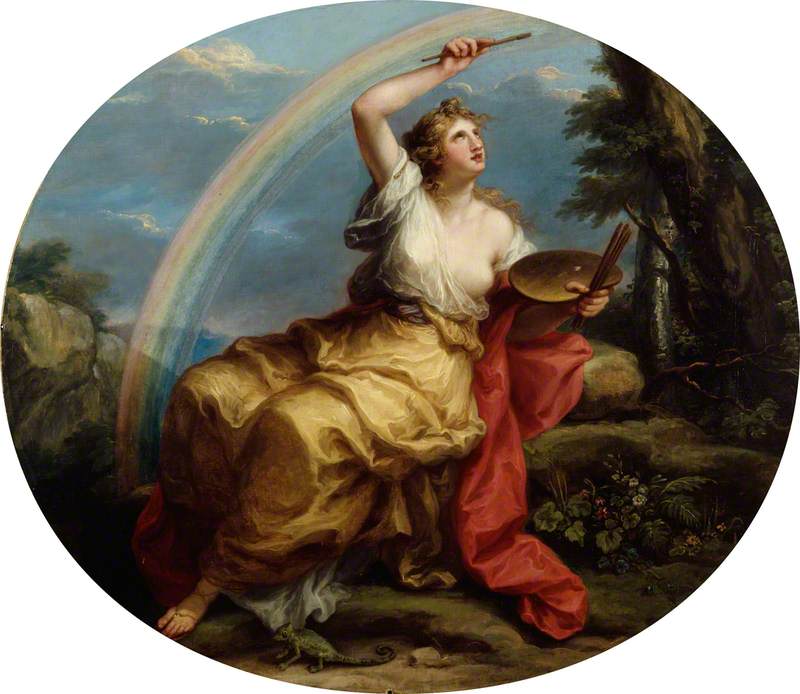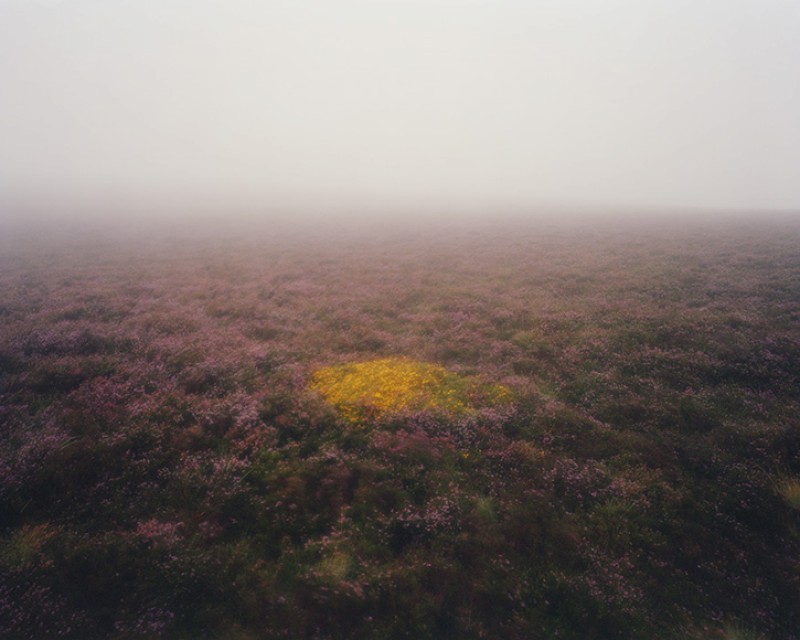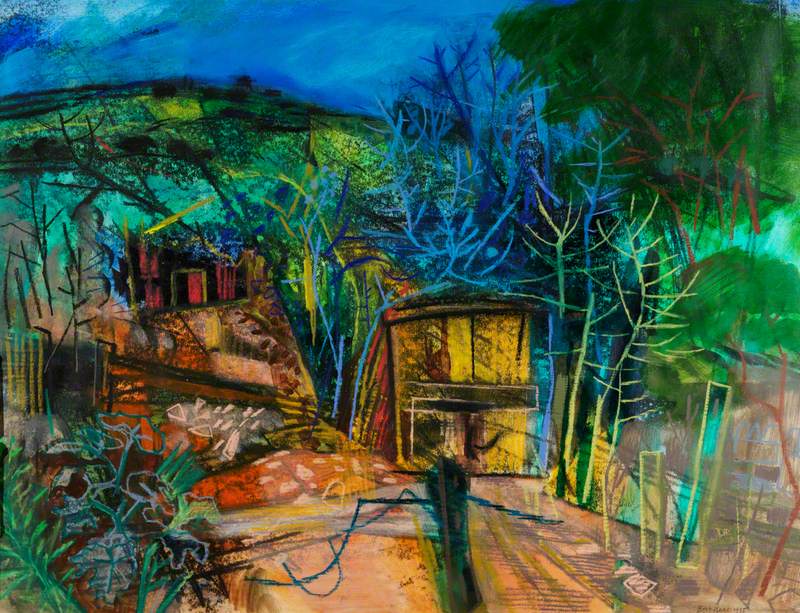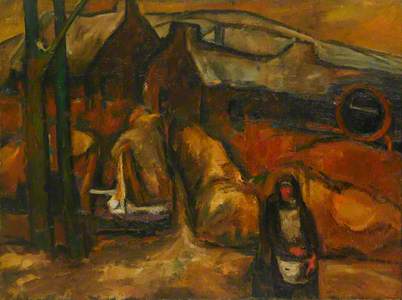'The poetic qualities of the landscape, a mountain landscape – she's lived amongst it, was born amongst it. The quality is so poetic, it attracts me very much – more than anybody else today. I think she's a very sincere artist.'
With these words, the painter L. S. Lowry (1887–1976) described an artist whose work was deeply inspired by her home and the landscapes of Cumberland in northern England: Sheila Fell (1931–1979).
An upcoming exhibition at Tullie House in Carlisle, 'Sheila Fell: Cumberland on Canvas', will explore Fell's relationship with her homeland. Spanning the 1950s to the late 1970s, Fell's art vividly captures the essence of her surroundings through an expressive use of colour and texture. Often depicting the rugged beauty of the Cumbrian landscape with a sense of realism and emotional depth, Fell's paintings feature dramatic skies and moody atmospheres, reflecting the changing seasons and weather patterns of the region.
Born in 1931 in the mining village of Aspatria, Fell's early life was economically difficult. When her father, John, lost his job at the Brayton Domain Colliery, he rarely worked again following a serious leg injury and so the family relied on the money her mother, Anne, made as a seamstress. Aspatria was positioned in the Ellen Valley, the Skiddaw peaks on one side and the flat Solway Plain on the other; Fell was caught up in the might of the mountains and seas that surrounded her.
From an early age, this dramatic landscape embodied Fell's sense of self, and although she did not live there again after leaving for college in 1949, her repeated visits enabled her, as pointed out by Cate Haste in her essay, 'The Poetry of Place', to see 'a cross-section of life. All the landscape is lived in, modulated, worked on and used by man'.
Fell developed a love of art at the Nelson Thomlinson School in nearby Wigton. On the return leg of a school trip in 1946, she saw the Westmoreland Mountains from a different angle and was struck by how they seemed 'black and hostile', describing them as 'a gigantic frightening wall nearly touching the glass and shutting out the sky'.
In 1947, Fell won a scholarship to attend the Carlisle School of Art – now Tullie House. This was a place that cemented her position as an 'outsider', where the city students looked down on the girl from the countryside. When the college principal decided that Sheila should go into textile design, the young painter was horrified: 'I want to be a painter', she explained to her form tutor. 'I don't want to do design or teach, or anything but PAINTING.'
Hayricks under Snow
c.1959–1960
Sheila Mary Fell (1931–1979) 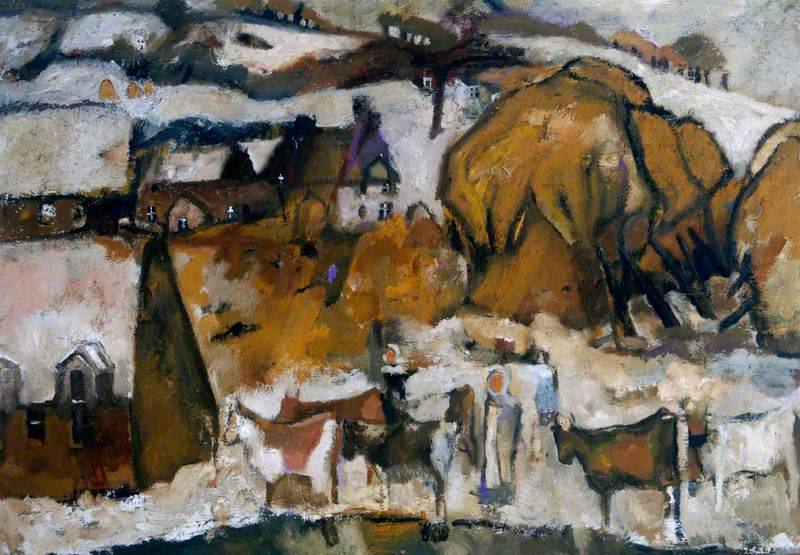
Fell was accepted into St Martin's School of Art in 1949, and London beckoned – a daunting prospect for someone so devoted to her home. Fell was not swayed by the trend towards abstraction and Pop art, but was instead drawn to the techniques of Honoré Daumier (1808–1879), Paul Cézanne (1839–1906), and Vincent van Gogh (1853–1890). What all these artists have in common is their ability to see the reality of society and to show this in an unemotional way. The change in 1950s popular culture, and the greater focus on northern working-class life, also impacted Fell's art.
At St Martin's, Fell was tutored by Roland Vivian Pitchforth (1895–1982) and John Napper (1916–2001), both official war artists, and during this time, she became friends with fellow student, Frank Auerbach (b.1931). In Haste's biography of Fell, she quotes Auerbach as saying: 'The students weren't going to take any nonsense from their teachers. And it did give a special atmosphere. There was an urgency and rebelliousness, and a certain sense that one would have to push very hard to get anywhere, a general feeling of not waiting around for somebody to give one status or a career or a chance to work, but a sort of impatient pushing, which Sheila certainly had.'
An early work, Woman in the Snow (1955) makes clear how Fell's urgent artistic language was shaped by the world around her. Despite the harsh cold, the woman stands tall, bearing her burden with resilience. The composition builds vertically, the geometric shapes of the buildings show the influence of Cézanne, while the mountains serve as a protective barrier, shielding the figure from the storm.
Woman in the Snow was exhibited as part of Fell's first solo exhibition at Helen Lessore's (1907–1994) Beaux Arts Gallery, London, in 1955. Aged only 24, Fell sold all of her work – a pivotal moment that, alongside Fell's own persistent determination rooted in her upbringing, enabled her to become one of only a few successful women artists working during this time.
Following this exhibition, Lowry purchased two of Fell's paintings which marked the start of an unlikely friendship. Lowry would often sit alongside Fell on sketching trips, drawing landscapes from his imagination – although at times they both picked out something of significance. Maryport, and its church, had a special meaning for both artists as did the Cumbrian landscape more broadly. Lowry reinforced Fell's own belief that an artist should paint what they know.
The exhibition and her friendship with Lowry marked a turning point for Fell: 'Had it not been for him, I think I would have just gone down. Nobody liked my work. If he hadn't come to that first exhibition and bought, it would have been a total flop… Ours was the sort of relationship that renewed itself every time we met.'
As seen in her paintings of the colliery and the miners of the village, of which Houses near Number Five Pit (1957), is a fine example, Fell brought together the homes she knew into synchronicity with the landscape. The houses, which stand shoulder to shoulder, represent the close-knit community, battling against a backdrop of menacing skies and mountains.
The muted palette and urgent brushstrokes conjure a sense of dread. But look closely, and there are breaks in the clouds where bright light illuminates the scene. This work was entered for the John Moores Prize in Liverpool in 1957, with Fell coming second to John Bratby (1928–1922) in the Junior section.
Like Woman in the Snow, Wedding in Aspatria (1958) also benefits from its vertical composition. The couple are forced to the front of the plane with tombstones and graves tumbling towards them; Fell's customary dark and dominant mountains are ever present.
There may have been a more personal input into this painting as, in 1958, Fell gave birth to a daughter, Anna, whose father was the Greek sculptor, Takis Vassilakis (1925–2009). However, she named her close friend, Clifford Rowan, on the birth certificate. Fell had painted Rowan back in 1952 and it is typical of her portraits: 'as sculptural as if carved out of stone', remarked Lessore.
With new responsibilities, Fell took a teaching role at the Chelsea School of Art that same year, but her artwork took priority, and she continued to return home several times a year for inspiration.
In the 1960s, Fell's works became increasingly more expressive with looser brushwork and an almost apocalyptic feel to the landscape. The brighter colours – deep oranges and reds – in works such as Men Working in a Cornfield (1964) and Silage Heap near Drumburgh, Cumbria, II (1964) gave rise to a sense of man and the earth becoming one. Such works are reminiscent of Van Gogh's The Sower (1888), with Fell similarly using colour to express emotion.
In 1963, the BBC's Monitor programme featured Fell on one of her home visits.
Here we see Fell in her hometown, her trendy 1960s hair, eyeliner and clothing at odds with the tough northern landscape. Fell talks about how different she feels when working outdoors and how she cannot think about her work in terms of paint and construction – yet, when she returns to her studio, it is all she can think of.
Despite her contemporary dress, Fell's work stood apart from the Pop art scene of 1960s London, which was characterised by bold colours, commercial imagery, and a focus on popular culture. While artists such as Pauline Boty (1938–1966) and Peter Blake (b.1932) were drawn to the energy and modernity of city life, Fell remained deeply rooted in her connection to the rural landscapes of Cumberland, committed to the themes of nature, place and memory rather than the shifting cultural trends of the metropolis.
Throughout the 1960s, Fell exhibited regularly and, with Lowry's encouragement, she accepted the offer of becoming an Associate of the Royal Academy in 1969, becoming a full member in 1974. The death of Lowry in 1976, which came soon after her father's, hit Fell hard. Although he had not directly influenced her techniques, he had been a true, lifelong supporter. Fell's own tragic, untimely death in 1979, at just 48 years old, was a significant loss for the art world.
In his 2009 book Confessions of a Collector, author and journalist Hunter Davies – who became friends with Fell as a result of their shared Cumbrian heritage – talked about his fascination with her work: 'We acquired seven Sheila Fells… which we love dearly, not just for their associations, knowing the landscape well, but for the truth, the lack of any sentimentality or chocolate-box gloss, which, alas, is the main feature of many Lake District paintings.'
Davies' take on Fell's paintings echoes Lowry's description of her as a 'sincere' artist, and Auerbach's belief in her authenticity. Through her work, Fell preserved the essence of Cumbria and allowed others to see the landscape as she saw it – even as she moved further towards a more abstract visual language, seen in works such as Landscape with Farm (1960–1970).
Fell's legacy deserves to be celebrated for its raw honesty and emotional depth. The exhibition at Tullie House, and the catalogue raisonné, which is set to be published in 2025, should consolidate her place as a significant figure in twentieth-century British art, making clear the profound connection she forged with her homeland.
Wendy Gray, writer and teacher
This content was supported by Jerwood Foundation
'Sheila Fell: Cumberland on Canvas' is at Tullie House, Carlisle, from 23rd November to 16th March 2025
Further reading
Hunter Davies, Confessions of a Collector, Quercus Publishing, 2009
Cate Haste, Sheila Fell: A Passion for Paint, Lund Humphries, 2010
Sarah MacDougall (ed.), Refiguring the 50s: Joan Eardley, Sheila Fell, Eva Frankfurther, Josef Herman, L. S. Lowry, exhibition catalogue, Ben Uri, 2014
Shelley Rohde, A Private View of L. S. Lowry, Harper Collins, 1979
